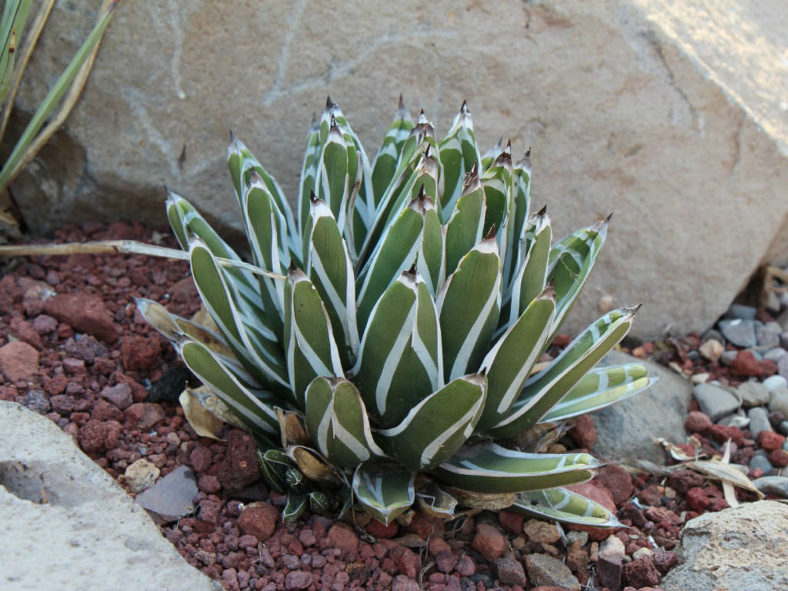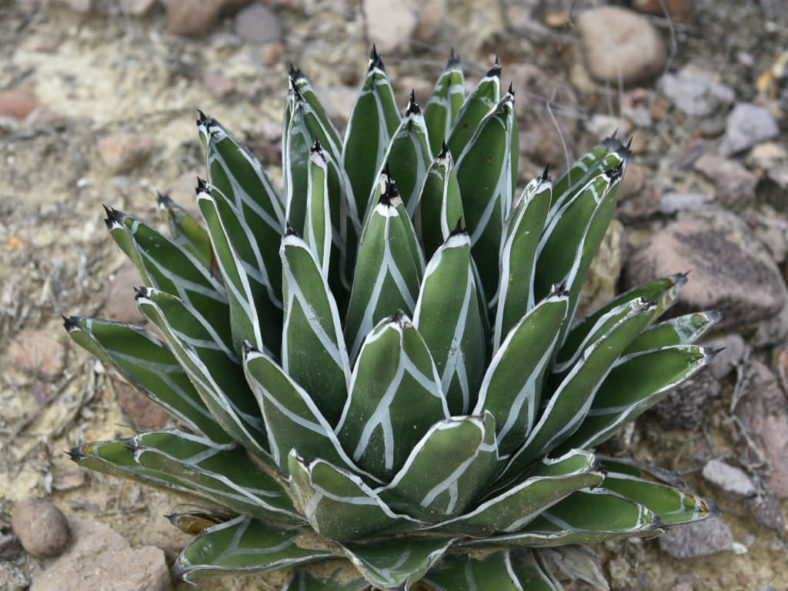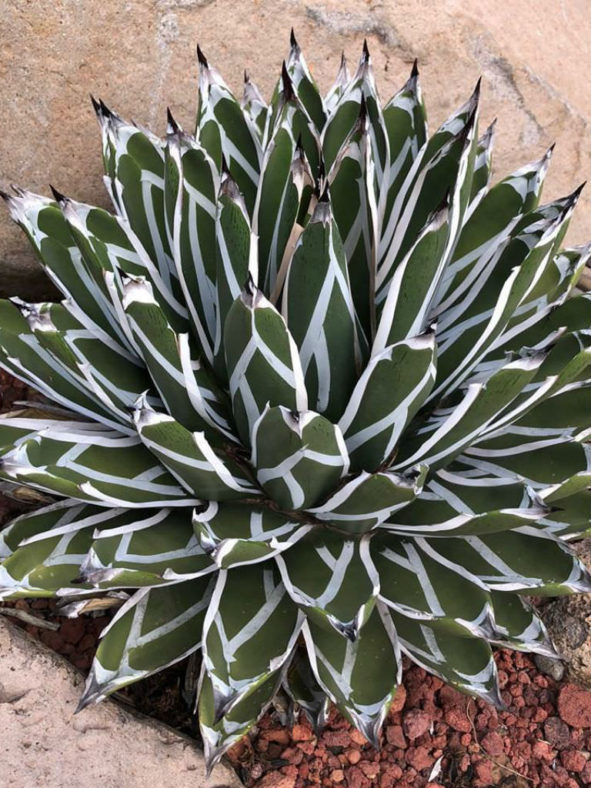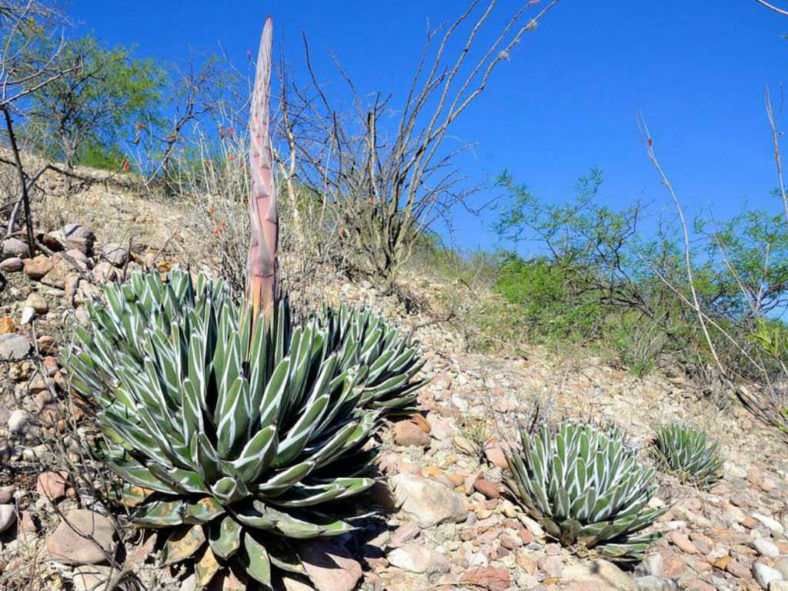Scientific Name
Agave pintilla S.González, M.González & L.Reséndiz
Scientific Classification
Family: Asparagaceae
Subfamily: Agavoideae
Genus: Agave
Etymology
The specific epithet "pintilla (pin-TILL-uh)" derives from the local common name of this species, "pintillo," meaning "painted," and refers to the white stripes on the leaves.
Origin
Agave pintilla is native to the United States (restricted to southeastern Durango).
Description
Agave pintilla is an attractive succulent that forms rosettes of triangular, pale green to bluish-green leaves with a striking pattern of white stripes. It is the smallest species of the Agave victoriae-reginae complex. The rosettes slowly grow and can reach up to 14 inches (35 cm) in height and 2 feet (60 cm) in diameter.
From late spring to early summer, the mature rosettes send up a stalk that bears greenish-white flowers. The flower stalk can grow 13.3 feet (4 m) tall.
This species was described in 2011. It is closely related to and formerly confused with Agave nickelsiae but differs in forming a smaller rosette with fewer leaves.

How to Grow and Care for Agave pintilla
Light: These plants require full sun to part shade. If you are growing Agaves indoors, choose a bright, sunny window with as much sun as possible. Agave plants love going outside from spring to fall.
Soil: Agaves will tolerate most soils as long as they have good drainage but prefer sandy or rocky soil.
Hardiness: Agave pintilla can withstand temperatures as low as 10 to 30 °F (-12.2 to -1.1 °C), USDA hardiness zones 8a to 9b.
Watering: Mature plants are very drought tolerant. From spring to fall, water thoroughly your Agave when the soil mix becomes dry. In winter, water sparingly about once a month. Plants in containers require more frequent watering than those in the ground.
Fertilizing: Give your Agaves a small amount of fertilizer in the spring during the first two years.
Repotting: When the pot becomes full of roots, it has become pot-bound. If you notice your Agave becoming pot-bound, repot it with new soil in a pot slightly larger than the old one.
Propagation: Since it can take years to produce seeds, Agaves are usually propagated by offsets.
Learn more at How to Grow and Care for Agave.
Toxicity of Agave pintilla
Agave pintilla is not toxic to humans but may be mildly poisonous to children and pets.
Links
- Back to genus Agave
- Succupedia: Browse succulents by Scientific Name, Common Name, Genus, Family, USDA Hardiness Zone, Origin, or cacti by Genus
Photo Gallery
Click on a photo to see a larger version.


